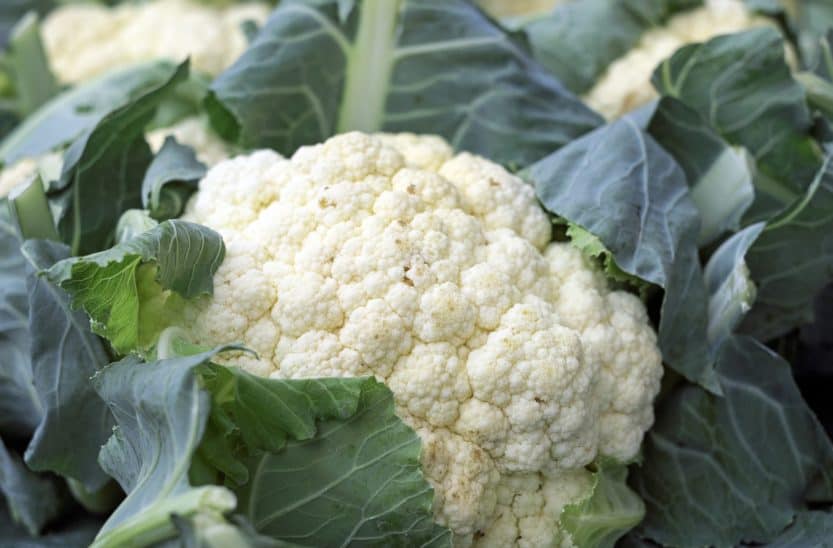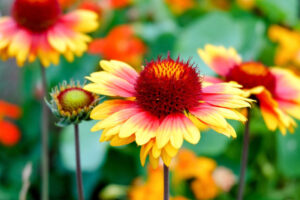Cauliflower is a good crop to plant if you have already mastered the skills needed to grow other members of the brassica family of plants. For the most part, cauliflower is one of the more challenging brassica plants to grow; however, for your efforts, you get a vegetable that has good nutritional value along with a wide variety of uses in the kitchen.
Buy Cauliflower Seeds Online
| Image | Name | Rating | Shop |
|---|---|---|---|
 | Garden Starter Kit (Cauliflower) | ||
 | Early White Hybrid Cauliflower Seeds | ||
 | Multi-Colour Mix Cauliflower Seeds |
Cauliflower is Rich in Nutrients
Cauliflower is rich in vitamin C and vitamin K, while also containing smaller quantities of the B vitamins. While the familiar white-headed varieties are the most common, cauliflower comes in shades ranging from snow white to deep purple. The purple varieties are a great choice to plant, because they contain a good dose of antioxidants, and are usually not available in the grocery store.
What Temperature Does Cauliflower Grow In?
Like most brassica plants, cauliflower prefers a cool climate to grow well. Some types of cauliflower have been bred to handle the heat, so if you live in a warm climate, consider purchasing one of those varieties. The cauliflower plant needs temperatures to be about 60 degrees Fahrenheit (15.5 C), while it matures, so plan for a fall harvest for best performance.
When Should I Plant Cauliflower?
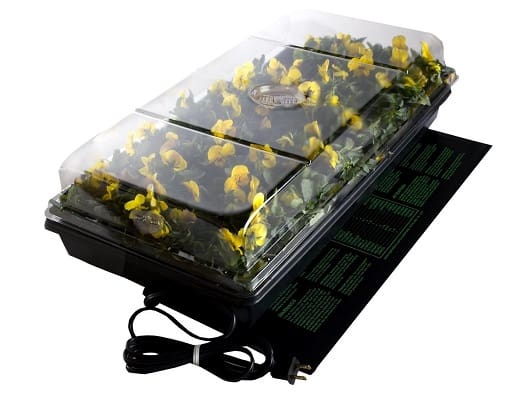
The best time to start your seeds indoors in heated trays (Buy Online) in the late winter, before your last frost date, so you can get your plants outside by mid to late spring. If you plan on sowing your seed directly into the garden, you should wait until after your last frost date. Since cauliflower can take anywhere from 1.5 to 3 months to mature, the seeds or seedlings should be planted outside no later than 90 days before your first frost.
Planting Cauliflower
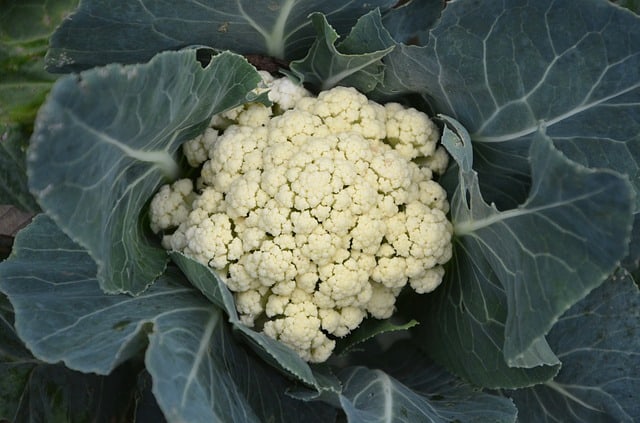
Choose an area to plant you cauliflower that has full sun exposure throughout the day. Cauliflower needs a very rich fertile soil to reach its full potential. Before planting, you should add a generous amount of compost to the soil, as most native soils lack the high organic content needed for cauliflower to flourish. At this time, you should also add a fertilizer high in nitrogen and potassium to the soil, because cauliflower is a very heavy feeder.
Cauliflower Plant Spacing
When putting your transplants into the garden, place the plants about 21 inches (53 cm) apart. If you are direct seeding, then space your seeds 11 inches (28 cm) apart; and once the seeds germinate, thin them to the same spacing as the transplants. Once your seedlings or seeds are in the ground, water them deeply, and then continue watering every day, for 3 to 5 days, until the seeds germinate and/or the transplants perk up.
Cauliflower Water Requirements
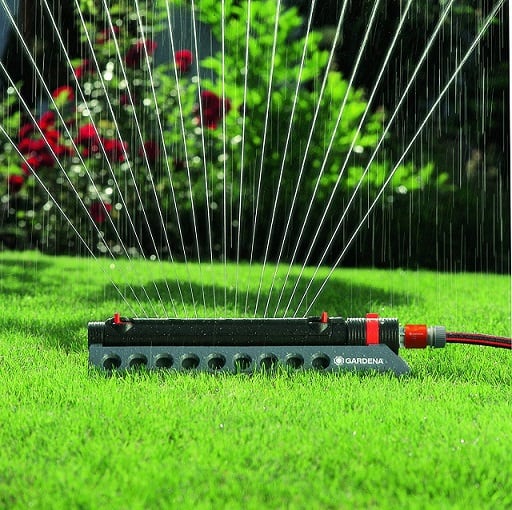
Once the cauliflower has established itself, it will require about 1 to 2 inches (2.5 to 5 cm) of water a week. You should water multiple times a week, being careful to avoid over-saturating the soil, in order to limit the risk of causing any rot, molds or fungus from infecting your plant.
Cauliflower Weed Control
While the plants are young, weeds may begin to overcrowd the seedlings. If this happens, then remove the weeds carefully, because cauliflower has a very shallow root system that can be easily damaged. If possible, add a thick layer of mulch around your plants, as this will prevent the weeds from overtaking the area and minimize the need for frequent watering.
Cauliflower Plant Care
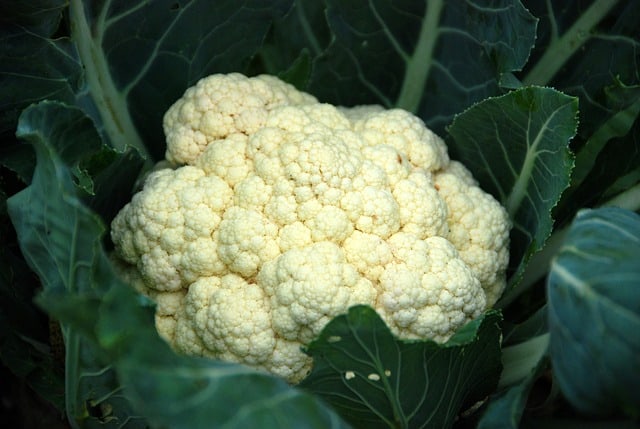
Cauliflower pests and Diseases
Caring for your young cauliflower plants can be somewhat of a challenge in the early spring when insect and disease pressures can be quite high. One such pest, the white cabbage butterfly, can cause serious damage to young plants, in some cases, completely defoliating them.
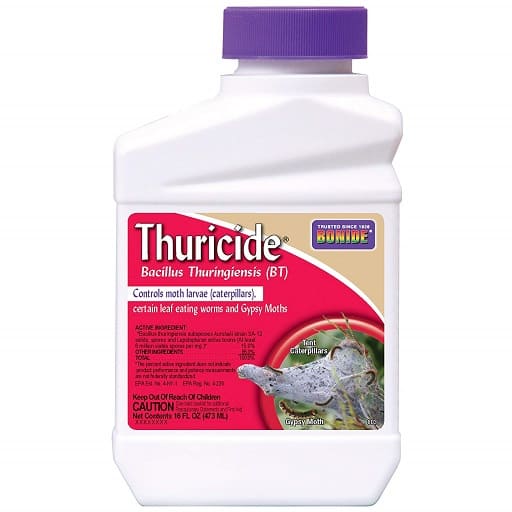
If you see white butterflies hovering around your plants, immediately begin checking them for eggs or larvae and removing them from the plant promptly. If the problem is greater than hand inspection and eradication can control, then you might consider using an organic pesticide, such as Bacillus Thuringenisus (Buy Online) to keep the insects at bay.
Cauliflower Fertilizer Requirements
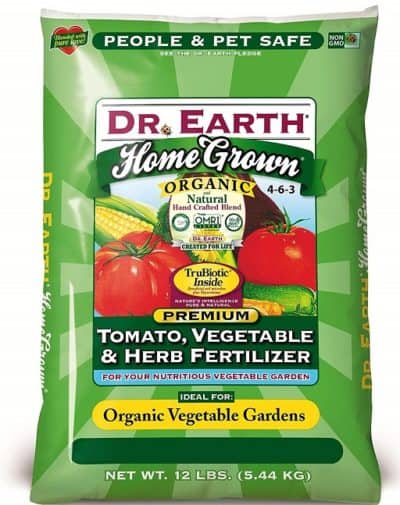
In order to keep the plant strong and healthy as the season progresses, you should fertilize the plants every 2 weeks with a fertilizer (Buy Online) high in nitrogen and potassium. Cauliflower also requires sufficient boron to thrive, and if you see any signs of leaf tips turning brown or the head of the plant turning brown, you can add seaweed extract to the soil for a slow release of the nutrient, or add borax in small amounts to the soil to quickly rectify the problem.
Blanching Cauliflower in the Garden
Once the cauliflower head begins to take shape, it’s time to begin the process of blanching the head. Blanching keeps the cauliflower head from acquiring a rough texture and discolored appearance due to sun exposure.
The technique used to blanch the head is to wrap the surrounding leaves over the head blocking any light exposure onto the developing head. Cauliflower varieties that are purple, orange or green do not require blanching; and some white varieties are self-blanching, so if you want to skip this step, you should seek out those types.
When is Cauliflower Ready to Harvest?
When the time comes closer to harvest your cauliflower, keep checking the head to see if it has reached a minimum diameter of 6 inches (15 cm). Once it reaches this size, it’s time to cut the head from the plant; you should cut the head with a sharp knife, leaving the first few sets of leaves attached to the head. Then, carefully remove the remaining leaves from the head and rinse your freshly harvested head in preparation for storage.
Storing Cauliflower
Cauliflower stores for a short period in the refrigerator, but not much longer than a week. Alternatively, you can chop the head up into 2 inch (5 cm) chunks, blanch and then store them in the freezer.


